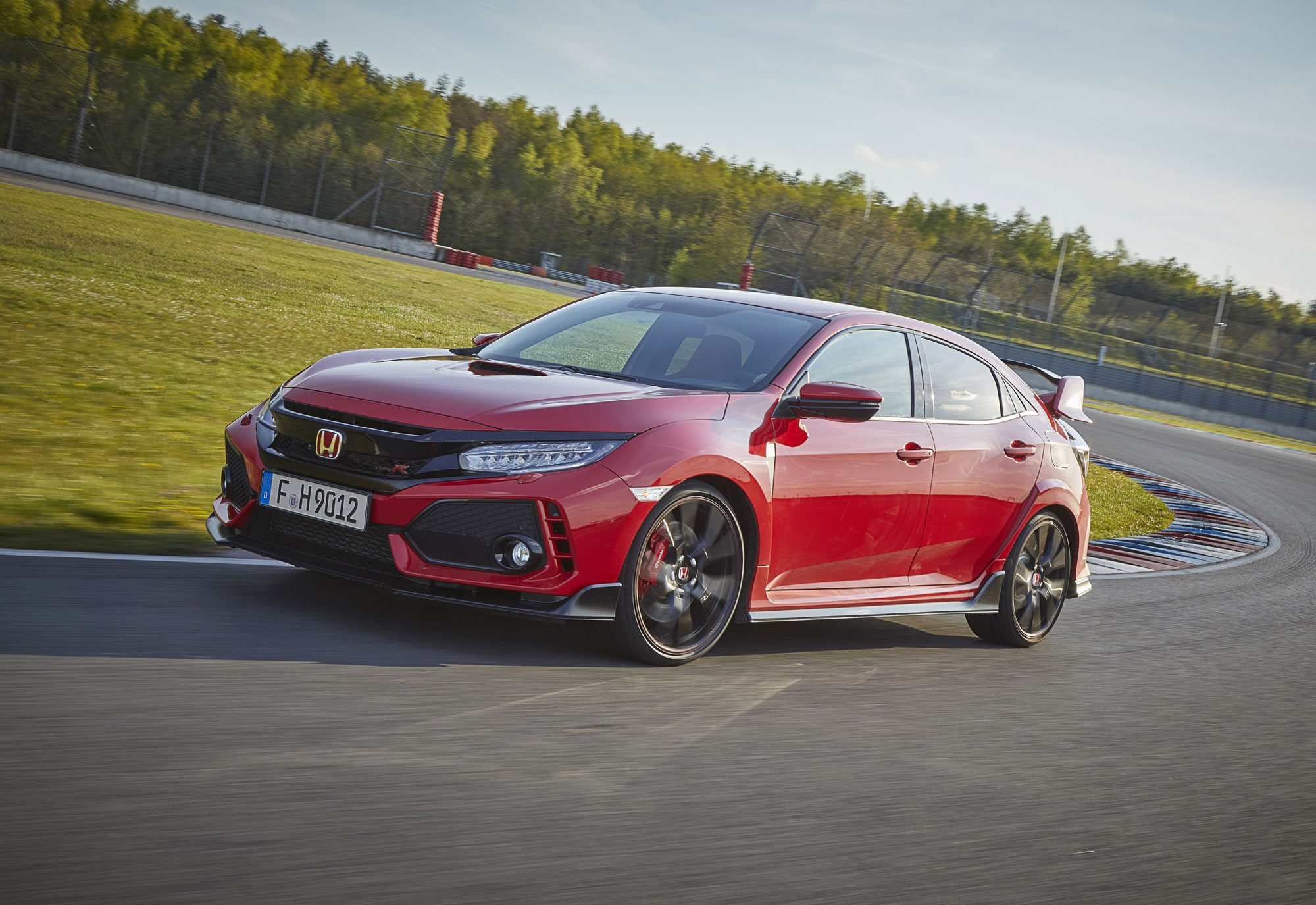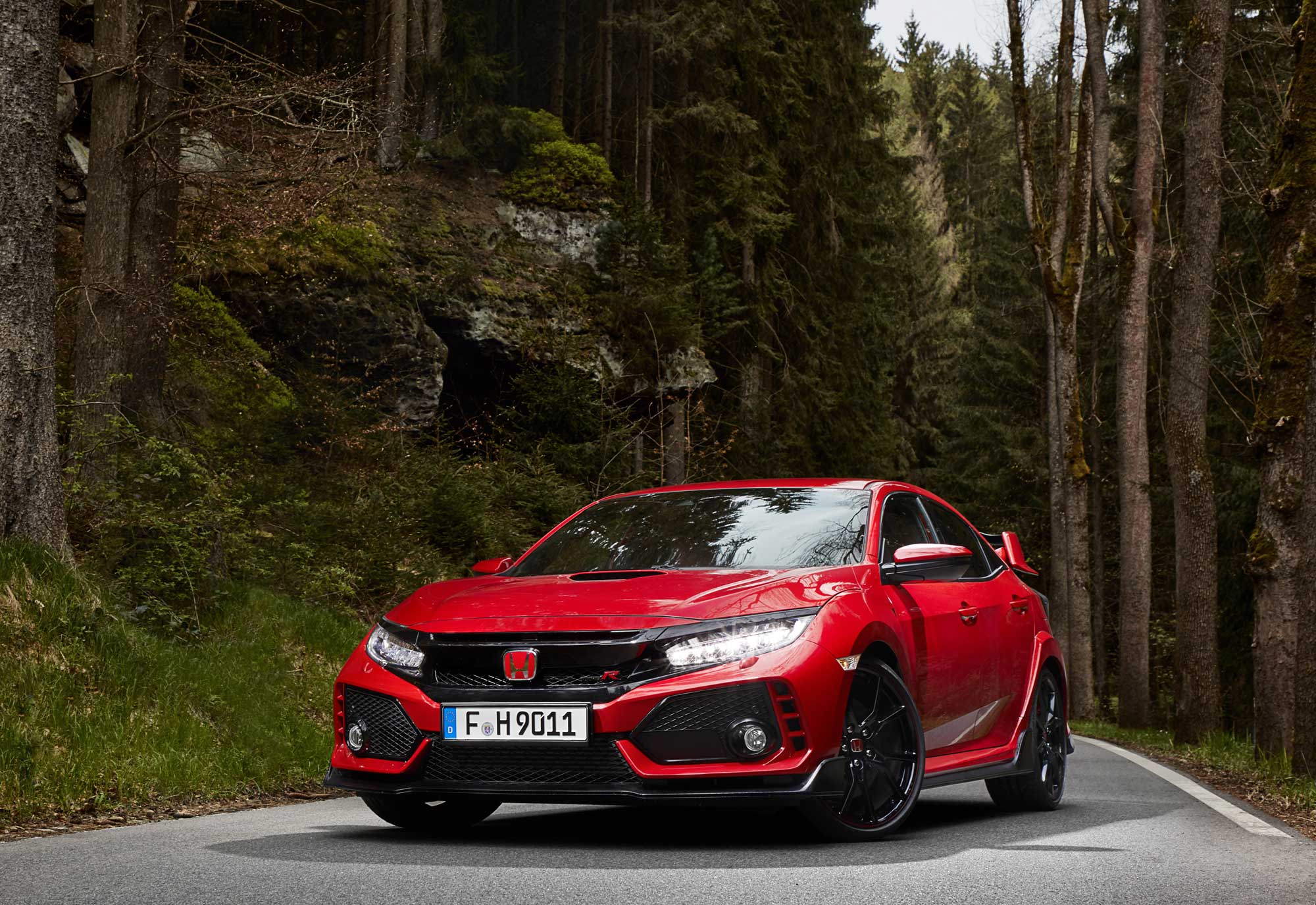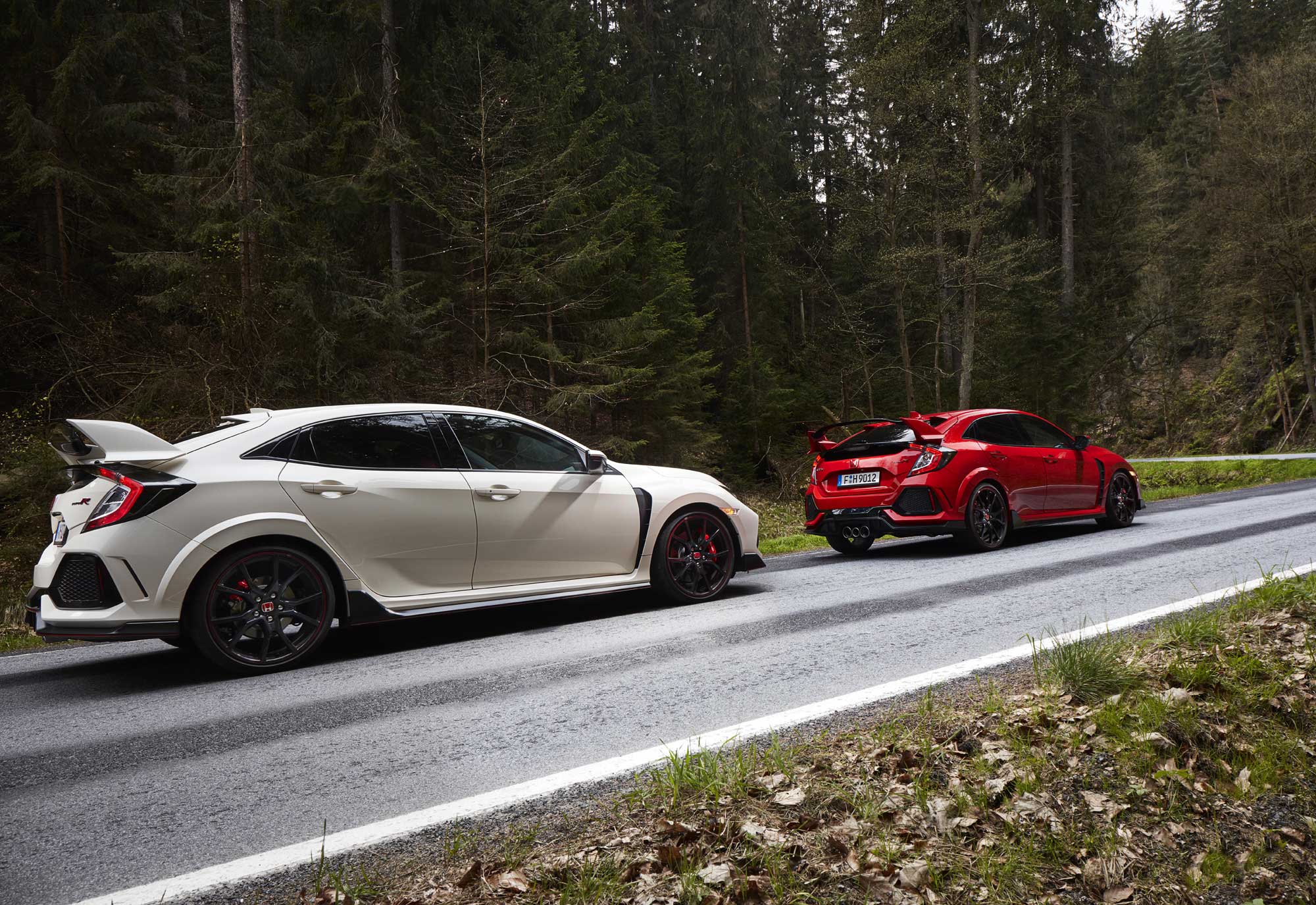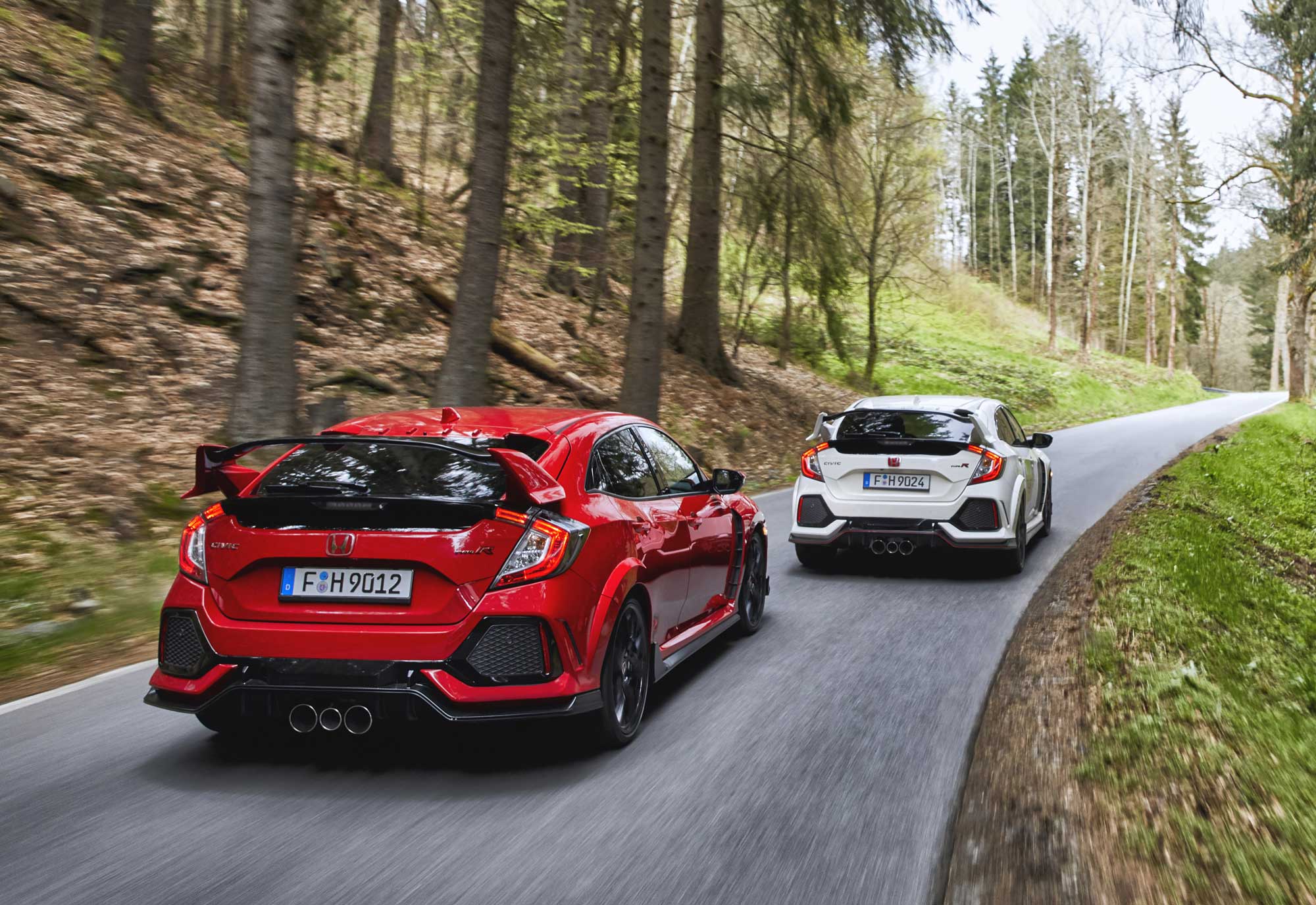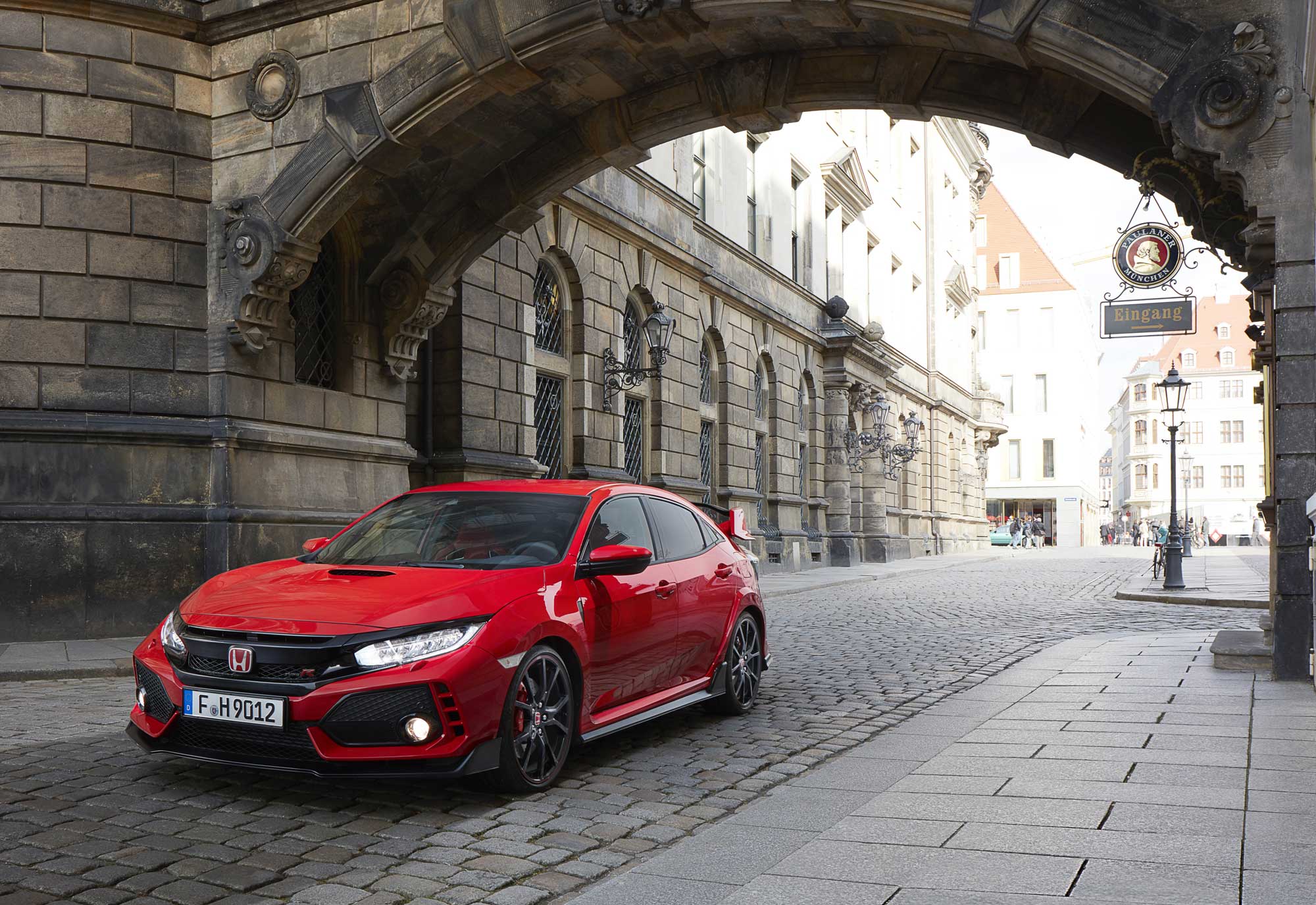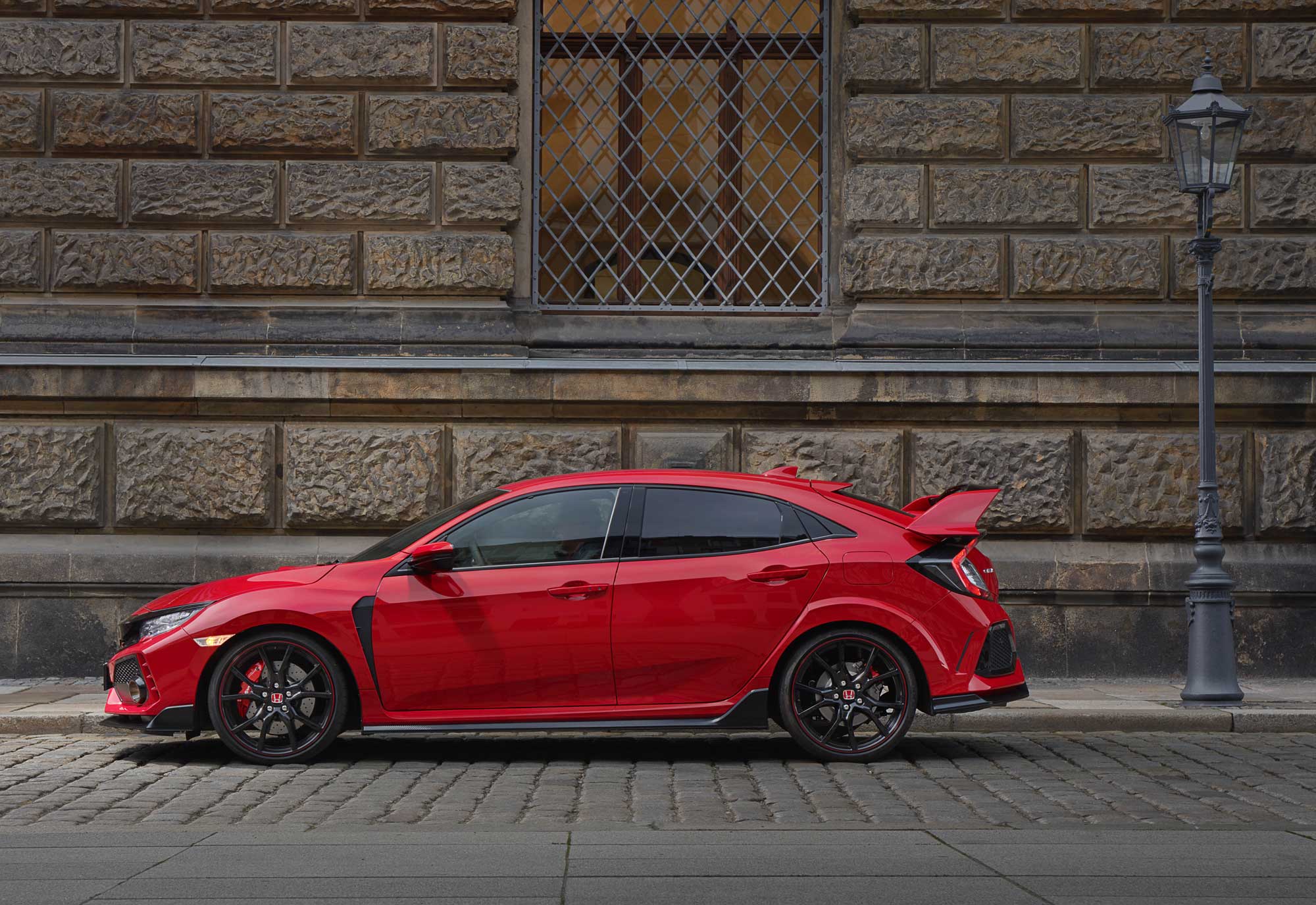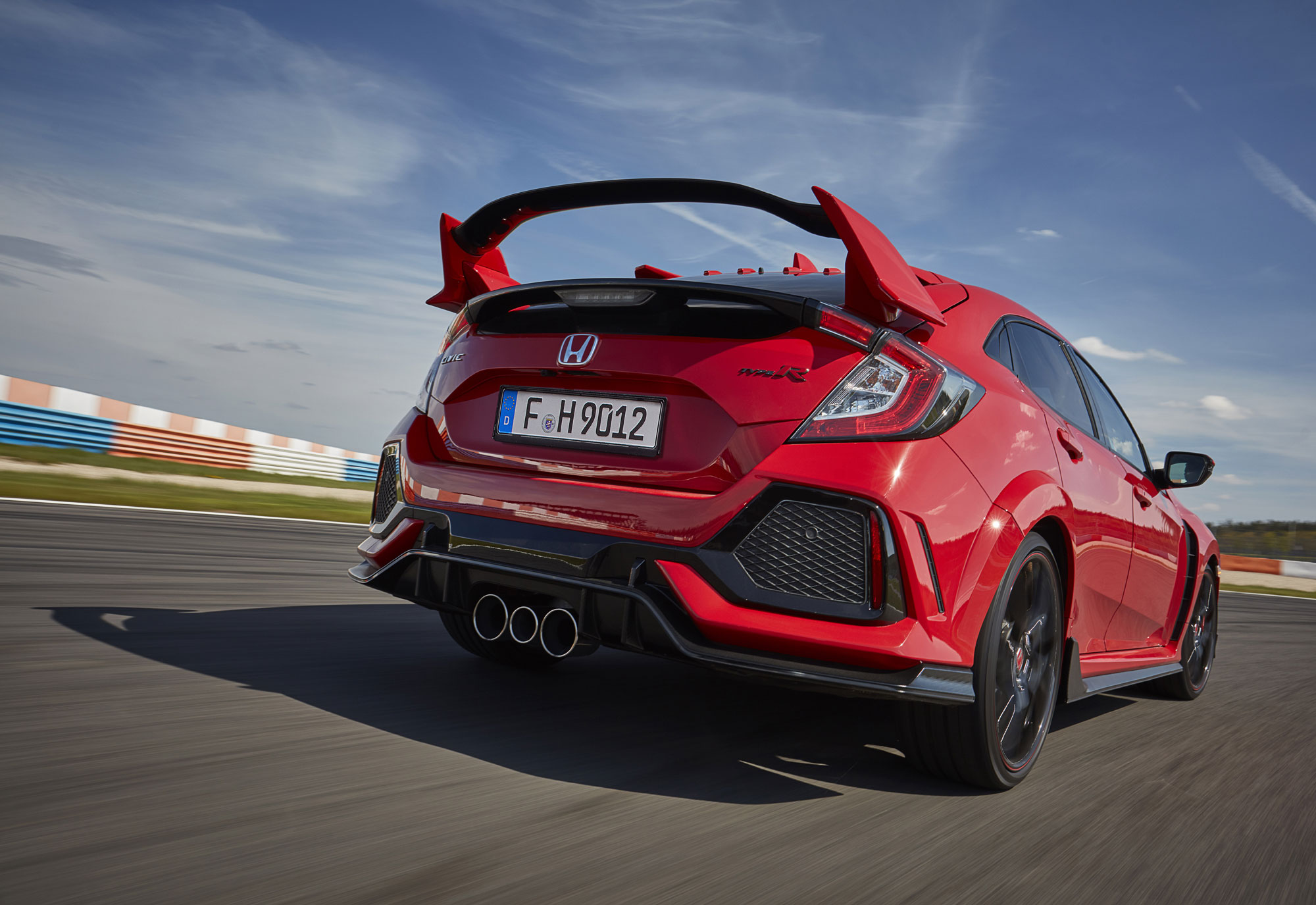Honda’s feisty super-hatch is back with more power and even more attitude. Chris Pickering reports from the international launch in Germany
Honda fans had a long wait for the previous generation Civic Type R. Years of speculation were followed by an all-too-brief production run right at the end of the outgoing model’s life. This time things are different, though. The new Type R comes hot on the heels of the standard tenth generation Civic, combining an all-new chassis with a breathed-on version of the old car’s 2-litre turbocharged engine.
A modest 10 PS power increase takes the total to 320 PS, with 400 Nm of torque. Even without the use of four-wheel drive, that’s enough to catapult the Honda from nought to 62 mph in 5.7 seconds and on to a top speed of 169 mph. Find a long enough stretch with a following wind and it’s likely this humble front-wheel drive hatchback will crack 170 mph.
Admittedly, humble is unlikely to be the word that springs to mind when you look at it. The Type R is brimming with aggression, from its touring car-style front splitter to the tip of that outrageous picnic table-sized rear wing. There’s science behind the ASBO appearance, though. All the aerodynamic aids are functional, Honda says, making this the only car in its class to generate real downforce (rather than merely countering lift).
Inside, the bright red sports seats deliver a similar statement of intent. Despite their vice-like grip they’re well-padded and surprisingly comfortable. The driving position is good too, with plenty of adjustment, and the seats now 25 mm lower than before.
Elsewhere, the new interior – which shares its fundamentals with the standard Civic – is a step up from the old car. The fit and finish good is generally good, although it doesn’t feel like it’s been hewn from solid granite in the way that the inside of a Golf R does. The Civic counters that with best in-class practicality, however, including generous rear leg room and a cavernous 420-litre boot.
Two trim specs are available. The standard Type R comes with Bluetooth and a 7-inch virtual cockpit display, complete with G-meter and lap timer functions, for £30,995. It also gets a host of electronic safety aids, including lane departure warning and active cruise control. Most buyers, however, are expected to opt for the GT version. Priced at £32,995, this adds a host of features, including blind spot detection, dual-zone climate control and an upgraded infotainment system with Garmin navigation and a wireless charging pad.
On the road
Prod the starter button – bright red, naturally – and the engine fires into life. There’s now a triple-pipe exhaust system, which uses the two outer pipes to provide the flow, while the centre section passively controls the tone. It’s still not the most evocative exhaust note, but it is honest and purposeful.
Accelerate hard from low revs and you can sense the engine building up boost, but there’s no real lag. The throttle response is pin sharp, particularly in the Type R’s more aggressive drive modes - more on those in a moment - and the mighty mid-range torque is accompanied by a genuine appetite for revs. Before you know it, the engine is lunging for the 7,000 rpm limiter and it’s time to grab another gear. What follows is actually one of the highlights of the Type R experience, because its six-speed manual transmission has arguably the sweetest shift currently on sale.
From a rolling start, the Type R feels even quicker than its sprint times would suggest. On our German test route, it was still pulling determinedly at an indicated 156 mph on the autobahn before traffic intervened. Perhaps more impressively, it felt rock solid at that speed, and it was possible to carry on conversing without raised voices. The sound deadening has certainly improved from the previous car, and Honda has worked hard to cut out some of the more booming exhaust resonance.
The biggest difference is the ride. While the previous car would re-arrange your vertebrate even at the suggestion of engaging +R mode, with its stiffer damper settings, the new one is a lot more civilised. There’s now a Comfort mode, which slackens off the throttle response, the steering weight and the adaptive dampers. It’s still not a limo by any means – you’re constantly aware that you’re in a car designed to demolish lap times – but it does significantly broaden the Type R’s capabilities. Switch back to the default Sport mode and the car actually surges forward a little, as if it’s straining at the leash. The steering gains additional weight and everything tightens up a little, but it remains a usable proposition on the road. Surprisingly, so is +R mode. Once strictly for race tracks and chiropractors, it’s now a realistic option on less forgiving tarmac.
On the track
Thanks to its relatively low weight of 1,380 kg (made possible by shunning the move to four-wheel drive favoured by many of its competitors) the Type R feels very agile. It’s perhaps not quite as light on its feet as the outgoing car, but it is considerably longer. And the upside to the increased wheelbase is greater stability at high speed. You can still feel the back end shimmying a little if you really load up the suspension under braking, but it’s not something you’re likely to encounter in road driving.
On track, the Type R is eye-poppingly quick. Much like its predecessor, it likes to be driven fast and neat. There’s perhaps a tad less throttle adjustability than before. Likewise, while the mechanical limited slip differential still helps to pull the nose in under power it’s now rather more subtle. The traction, however, is every bit as surreal. Despite putting all 320 PS down through the two front tyres there’s rarely any wheel spin and next to no torque steer. Honda’s decision to stick with front-wheel drive appears to be well and truly vindicated.
Another potentially controversial move was the adoption of a variable-rate steering rack. Much like the standard Civic – and indeed the NSX supercar – the Type R pulls it off, however. You rarely even notice the ratio quickening as you wind on lock; the effect simply being that you can always keep your hands in the same position on the wheel. It’s pin-sharp too, and while there’s not a huge amount of feedback there is more than you get in most electrically-assisted steering setups.
Throughout the Civic Type R there’s a recurring theme of precision. There’s something almost clinical about the way it dissects a good road, covering ground at a rate we simply wouldn’t have thought possible for a front-wheel drive hot hatch a few years ago. At the same time, improvements to the ride, interior quality and acoustics have all succeeded in broadening out the car’s appeal. It remains a relatively hardcore choice, but one that’s now far more accessible.
Performance and fuel consumption for the 2017 Civic Type R
- Max speed: 169 mph
- 0-62 mph: 5.7 secs
- Combined mpg: 36.7
- Engine layout: 2.0-litre 4-cylinder VTEC turbo
- Max. power (PS): 320
- CO2: 176 g/km

